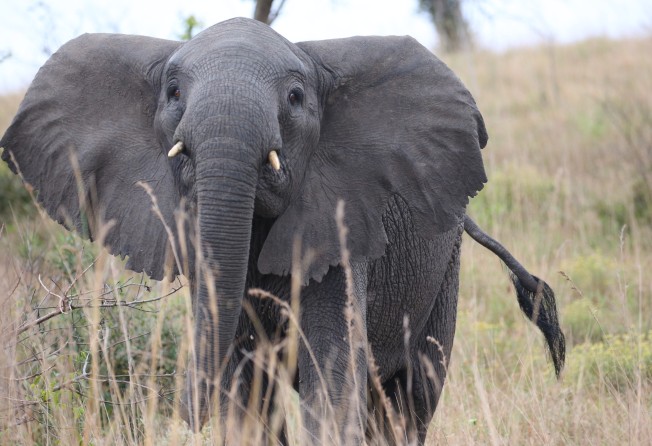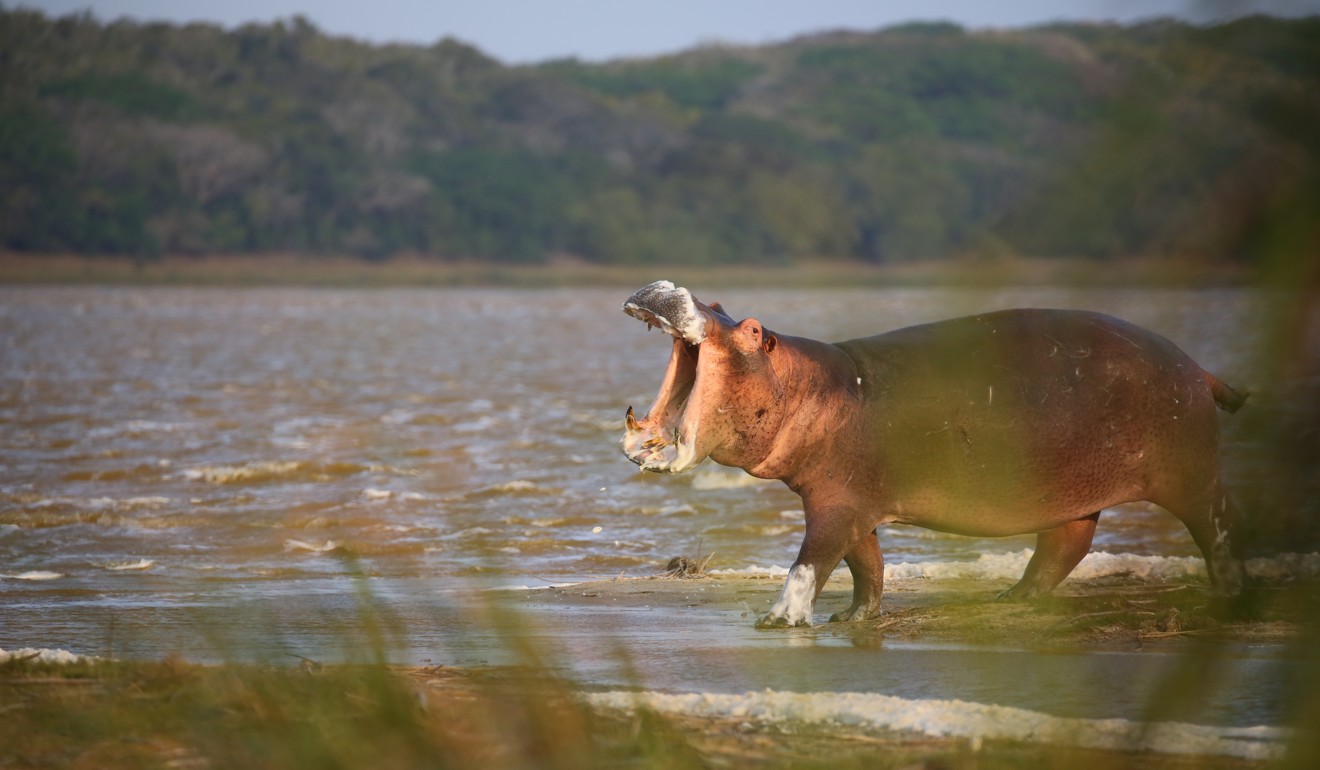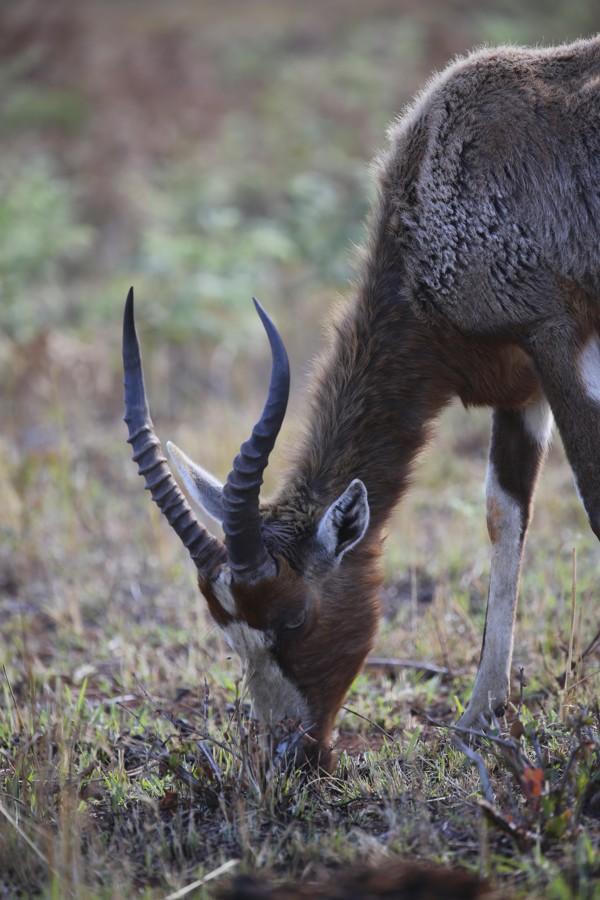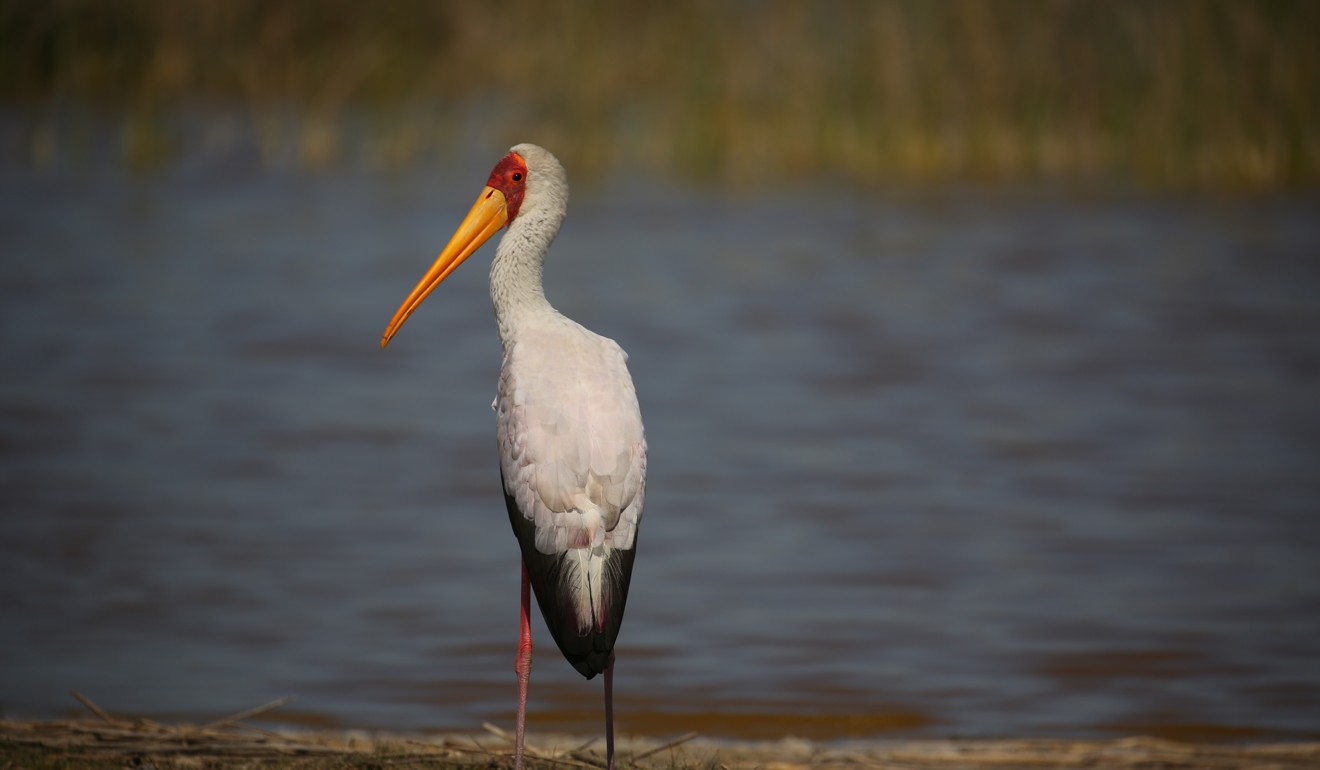African wildlife reserve recovers from ruin of war, with elephants leading the way
Mozambique’s Elephant Coast is living up to its name again thanks to the transfer of elephants and other wild animals from South Africa to a reserve that’s as wild as they come – but vulnerable to development

“If you are charged by an elephant, you must run and throw off your clothes,” says Junhito Timbane, recalling how he escaped an enraged tusker by stripping off as he fled through the bush. Timbane is trainee manager at Anvil Bay, a community-owned barefoot beach camp that seems to grow from the coastal forest at Ponta Chemucane, on the fringe of Mozambique’s Maputo Special Reserve.
“One bull in particular is a dangerous bugger,” adds manager Dave Wylie, as we swap tales over dinner, our table a diced tree trunk atop the sand.
The rugged South African raises his pinotage to the light and swirls. “He’s sly. He saw me coming once, so he made an end run through the forest to intercept me. I got the better of him, though,” he says, laughing. “I put my foot down.”
No easy matter, I muse, recalling spinning wheels in the deep sandy tracks I negotiated to arrive at this remote lodge overlooking the Indian Ocean.
Devastated by a civil war from 1977 until 1992 that decimated its wildlife, Mozambique struggles to compete in the big-stakes safari game. Maputo Special Reserve, for example, still has neither rhinos nor buffalo. No lions, leopards or cheetahs. All were poached or killed during the war. But tourist infrastructure is being spawned – Anvil Bay opened in 2015 as the first lodge in the reserve – and animal restocking, initiated in 2010, is approaching critical mass.
Mozambique’s beaches are blessed with some of the most sophisticated honeypots of indulgence in Africa, promising a resort experience to rival the Maldives and Mauritius.
The few visitors the country sees may also fly in a helicopter over the teal-blue Mozambique Channel, swirled with carnation-pink sandy shoals; sail on one of the traditional dhows – ancient holdovers from when this coast was a dominion of Arab traders – that ply the channels, their pointy sails slicing the shallows like shark fins; snorkel a pristine reef off Bazaruto Island in crystal waters teeming with parrotfish, Moorish idols and blackspotted sweetlips; or laze at beach-chic Azura Benguerra, a luxurious love-nest with rose-petal-strewn king-size beds and torch-lit gourmet dinners on the sands.
But it is the austere, virginal Maputo Special Reserve that perhaps offers the most satisfaction.

Despite being barely a 90-minute drive south from Maputo, Mozambique’s tranquil capital, the 1,040 sq km (400 square mile) reserve is about as off-the-map a destination as one could imagine. In the next five days, I will see only four other vehicles (two being dug out of sand), but no lack of game.
Just five minutes into the park, a herd of gazelle bounds across our path. Vervet monkeys scamper along the track. Then five giraffes emerge languorously from the thorny scrub. We stop and I get down (there is a benefit to there being no predators) and approach on foot through the grass until they turn and lope off.
Two hours into our visit we arrive at Lagoa Xingute. A yellow-billed stork, colourful as Crayola, patrols the edge of the lake with occasional dabs at the mud. Hippos wallow 50 metres from shore.
We settle under a tamarind tree, savouring the serenity as José, our amiable, willing yet taciturn guide, prepares a picnic lunch. Loving the setting, we later return to make camp. I relax in a canvas chair, supping hot chocolate beside a log fire, and listen to the hippos’ metallic honks echo across the still water like tolling church bells.

Two logs, innocuous amid the lakeside flotsam, suddenly rise on eight legs and slither into the gunmetal lake. Nile crocodiles. Adrenaline fuels my retreat, punctuated with frequent views over my shoulder.
The park was created as Maputo Elephant Reserve in 1932, to protect southern Africa’s remaining coastal herd of elephants. Combining grasslands, wetlands, swamp forests, mangroves and coastal lakes, the reserve’s purpose was expanded in the 1960s, in recognition of the area’s wide biodiversity.
Then came the desolating anti-colonial struggles and civil war, and local extinction of many wildlife species.
In 2006, Mozambique’s National Administration for Conservation Areas and the Peace Parks Foundation (a non-profit organisation that promotes trans-frontier conservation areas) signed an agreement to develop and manage the war-torn park through community-based conservation and tourism.

The prime task was to restore its wildlife, and the first animals arrived from South Africa in September 2010. By 2016, a total of 1,701 animals had been translocated.
Rewilding was stepped up last year, with another 2,332 giraffes, impala, kudus, nyalas, warthogs, waterbuck, wildebeest and zebra. Buffaloes are soon to be introduced and there is even talk of (eventually) lions. But the elephants most loudly trumpet this conservation success story.
Once, Africa’s largest-tusked elephants were able to roam this sparsely populated region – the “Elephant Coast” – in relative safety as they migrated between Mozambique and South Africa’s KwaZulu-Natal. The ravages of war were traumatic. Elephants stepped on mines. Others were shot for meat. Ivory poaching financed arms procurement. Then, the elephant population – down to an estimated 120 individuals – was divided when, in 1989, the border with South Africa was sealed.
Today, Maputo Special Reserve and South Africa’s Tembe Elephant Park are contiguous as part of the Lubombo Transfrontier Conservation Area. The border fence is gone and about 650 elephants now tramp the ancient pathways via the Futi River corridor, rekindling old acquaintances as they roam through dense grass and coastal dune forest.
José is a good driver in the treacherous sand, but of wilderness lore – especially elephants – he seems clueless. We’ve seen them: dark blobs, far off, half hidden amid a vast, seasonally flooded plain of lime-green grass that rises to their shoulders.

The beast rises angrily, waves its ears, swishes its tail like a dog, roars and then mock charges me. I turn tail and run to the vehicle, heart once again beating madly.
People come here thinking ... that elephants will react as if humans are part of the landscape. They were traumatised during the civil war. They have long memories
“You were lucky. A tusker killed an old lady here last week when she was cutting reeds for her roof,” says Wylie, five days later, as we dine at Anvil Bay on a gourmet meal of Swaziland beef steak, Greek salad, roast potatoes and freshly caught crabs.
“People come here thinking it’s like Kruger, and that elephants will react as if humans are part of the landscape,” adds Pedro Fonseca, owner of Mabeco Tours. “They were traumatised during the civil war. They have long memories. When they come at you, they come at you.”
I have returned to Maputo Special Reserve with Fonseca, drawn back by the reserve’s primal beauty. We pass a herd of elephants, perhaps 50 strong, moving peacefully among sandy thickets. Fonseca keeps a distance.
“They’ve even been known to overturn vehicles,” he says, eyeing warily two big bulls lumbering obliquely towards us.

In November, the Peace Parks Foundation committed US$10 million to improving policing and installing tourist facilities, including three camps (currently, Maputo Special Reserve has a single rustic campsite on the shores of the Indian Ocean).
The US$725 million Maputo-Ponta do Ouro highway, which will cross Africa’s largest suspension bridge and is being built by the China Road and Bridge Corporation, is due for completion this month and will cut travel time from Maputo to the reserve in half. This, and plans to pave the sand track from the park entrance to a new oceanfront lodge nearing completion at Milibangalala, have Fonseca worried.
“This is as wild a place to see animals on safari as you’ll find in this part of the world,” he says, sweeping his arm across the savannah. Burchell’s zebra and wildebeest thunder past, the earth trembling beneath their hooves.
Fonseca then breathes in slowly. “In five or 10 years, Maputo Special Reserve will be spoiled as a genuine safari experience. You’re privileged to enjoy it while it’s still raw.”
Getting there
South African Airways, Ethiopian Airways and Qatar Airways fly between Hong Kong and Maputo via Johannesburg, Addis Ababa and Doha respectively.